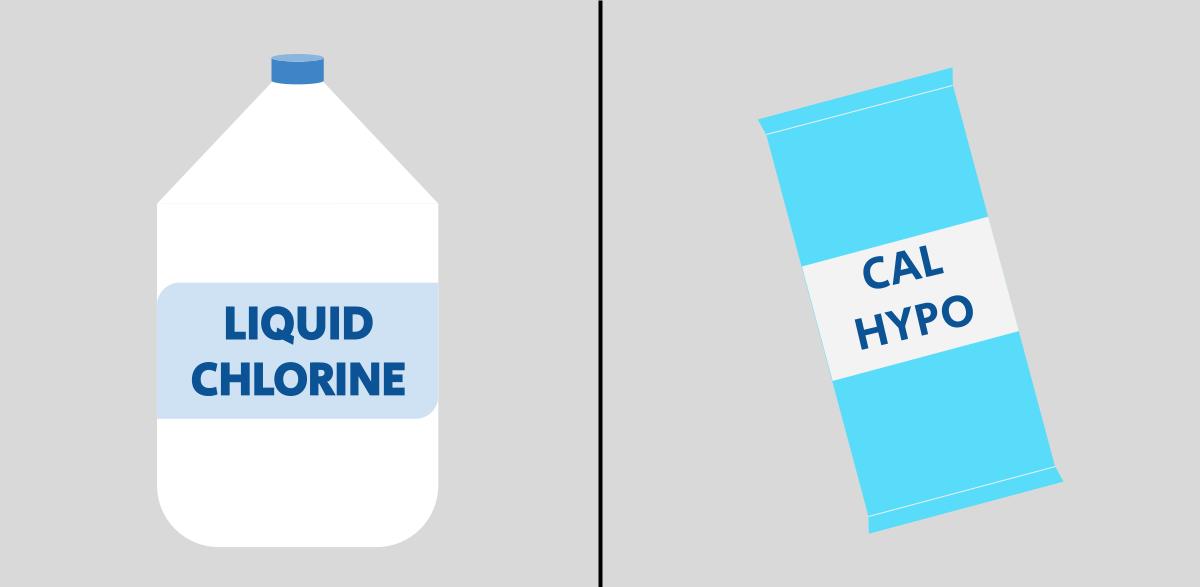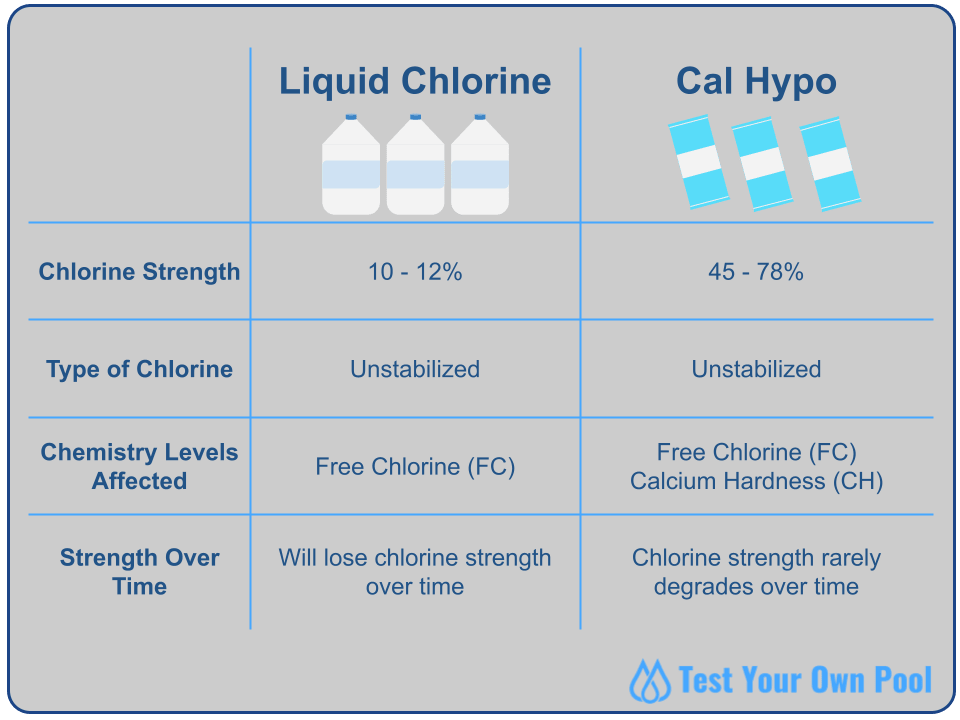Cal Hypo (Shock) vs Liquid Chlorine: Should You Use Granules Or Liquid?

Two common forms of chlorine used to sanitize pools are calcium hypochlorite, cal hypo, and liquid chlorine.
Both have more common traits than other chlorine types, but some major differences might make you think twice about which to use for daily chlorination.
Let’s look into the use cases for cal hypo and liquid chlorine.
What is Liquid Chlorine?
Liquid chlorine is sodium hypochlorite, which is also known as bleach and is used as a common household disinfecting agent.
It is an unstabilized form of chlorine, meaning there is no chlorine stabilizer, like cyanuric acid (CYA), that is added to it.
Liquid chlorine typically ranges in strength from 10% to 12%. You can also use bleach found in grocery stores with a lower strength of 3% to 6%. If you do use household bleach, make sure it is scentless with no added fragrances.
Advantages of Liquid Chlorine
- Liquid chlorine only affects chlorine levels. It does not raise or lower any other pool chemistry parameter.
- It is a fairly popular chlorine choice and widely available in most pool and big box stores.
- Compared to other chlorine choices, it’s typically the least expensive.
- It’s quite simple to use and add to the pool. There is no pre-mixing or other step other than measuring out what you need and adding it.
- Because it works very quickly, it is a popular choice for shocking the pool.
Disadvantages of Liquid Chlorine
- Liquid chlorine will degrade and lose its strength over time. If not stored properly, the strength can be cut in half after only a few months. This limits you to only buying what is necessary for the pool season
- Liquid chlorine primarily comes in gallon jugs which can be quite cumbersome when purchasing multiple gallons at a time.
- Since it has such a low strength, more liquid chlorine is needed daily to weekly compared to tablets and pucks.
What is Cal Hypo?
Cal hypo, short for calcium hypochlorite, is a form of chlorine available in granules or tablets.
Cal hypo is also an unstabilized form of chlorine with no added stabilizer. Its chlorine strength can range from 45% to 78%, depending on the type used.
It’s popularly used as a shock treatment and is typically found in stores simply as “shock.”
Because it is composed of calcium, cal hypo will raise calcium hardness (CH) levels.
Advantages of Cal Hypo
- Cal hypo has a higher chlorine strength compared to other unstabilized chlorines.
- Cal hypo rarely degrades over time. It can be used a few years later and still have the same strength as when it was bought.
- In its granular form, its fast-dissolving nature makes it a popular candidate for shock treatments as well as daily use.
Disadvantages of Cal Hypo
- Cal hypo is typically more expensive than other chlorines. While it may have higher strengths, the price could make it more costly per season.
- It will increase calcium hardness levels over time. High calcium in water can cause severe damage to pool equipment and plumbing if it isn’t properly maintained. Pool owners who live in areas with hard water should try and avoid using cal hypo.
Which Should You Use for Daily Chlorination?
Regarding daily use and as a shock treatment, I would use liquid chlorine.
The choice between them depends on various factors, including the specific needs of your pool and, ultimately, your personal preference.

Liquid chlorine is more inexpensive and will not affect any other chemistry parameter. However, its low strength and short shelf life may require more trips to the store.
Cal hypo has a very high chlorine strength and can last over multiple swim seasons.
However, its impact on calcium hardness may make you think twice, especially in areas where high calcium is already a concern.
While it may be a bit more bulky to carry from the store, liquid chlorine is simple to use and will only affect chlorine levels.
